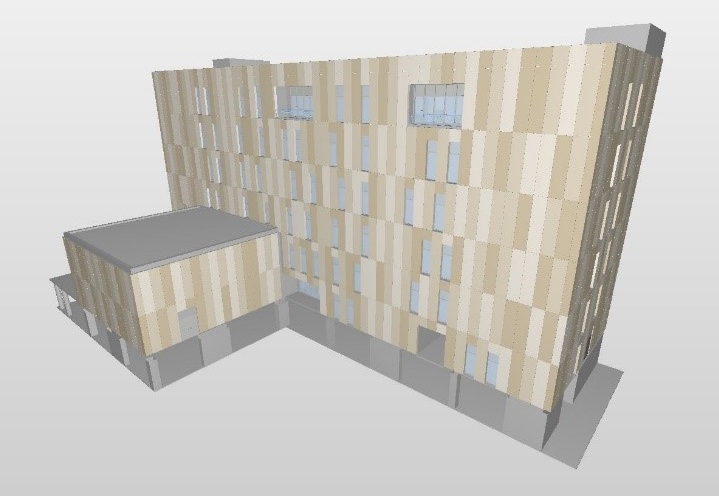AUTORE: Marco Trovato
TUTORS: Ing. Alessando Zichi, Ing. Giovanni Mondello
INTERNSHIP: Italconsult
MASTER: Master in “BIM Manager” a.a 2020/21
L’applicazione del Building Information Modelling trova sempre più spazio a livello globale, spinta dallo sviluppo tecnologico dei software e dalle esperienze positive sviluppate nei paesi che per primi hanno adottato questo nuovo paradigma come gli USA, il Regno Unito ed i paesi scandinavi.
In molti paesi europei l’applicazione del BIM sta diventando quindi una prassi consolidata e sempre più frequente anche grazie alle imposizioni normative come, nel caso dell’Italia, il Decreto “Barotono” – che prevede la progressiva introduzione dell’obbligatorietà dell’uso del BIM negli appalti pubblici – e le recenti Norme UNI 11337.
Tuttavia, in altri contesti geografici, l’applicazione del BIM è lasciata all’iniziativa dei singoli soggetti, siano essi studi di progettazione, costruttori o committenti. Questo è anche il caso dell’Arabia Saudita dove, diversamente da quanto avviene in paesi vicini geograficamente e culturalmente come gli Emirati Arabi Uniti, non esiste alcuna norma che spinga gli attori del settore AEC ad utilizzare il BIM.
La tesi pertanto, dopo una prima parte in cui vengono introdotti gli aspetti chiave del BIM, sviluppa uno studio relativo al mercato del settore AEC in Arabia Saudita, nonché sullo stato di adozione del BIM anche in raffronto ai vicini paesi appartenenti del Gulf Cooperation Countries, analizzando potenzialità ed ostacoli all’implementazione del BIM in Arabia Saudita.
Successivamente, dopo un approfondimento sugli aspetti teorici e pratici del Model Checking in ambito BIM, il caso studio vedrà l’applicazione del model checking e della clash dection architettonico-strutturale ad un edificio sviluppato per in progetto in Arabia Saudita impiegando il software Solibri per il model checking ed il software Navisworks per la clash detection. Lo studio analizzerà le tipologie di incongruenze e di interferenze individuate evidenziando come alcune di queste, significative dal punto di vista dell’impatto sulla realizzabilità dell’opera, siano sfuggite al controllo di qualità manuale svolto sul progetto.
FOR INTERNATIONAL STUDENTS:
Building Infomation Modelling is now widely used worldwide thanks to improvement of software applications and thank to positive experinces developed in countries that first applied this new paradigm, like USA, UK and Scandinavian Countries.
In Europe BIM application is becoming a new and more frequent reality also thank to regulations that are making BIM adoption mandatory. For example in Italy regulation UNI 11337 where recently issued and the “Decreto MIT 560/2017” imposes a progressive BIM adoption for public projects.
However, in many other countries, BIM adoption is sttil coming from single players. This is the case of Saudi Arabia where BIM is implemented independently by AEC actors and where there is no regulation in terms of BIM adoption, differently from what is happening in neighbourhood country such as UAE.
This thesis gives a brief introduction to BIM and develop a study about the status of the AEC sector in the Kingdom of Saudi Arabia. Moreover and analysis of the BIM adoption status in KSA is given, with a comparison with other Gulf Cooperation Countries, and analysing potential opportunities and obstacles to BIM adoption in Saudi Arabia.
Then, after a deeper study of Model checking BIM based concepts and procedures, the study case is presented and the model checking and the clash detection is performed to architecture and structural models of a building designed in Saudi Arabia. The model checking analysis is perfomed using Solibri software while the clash detection analysis is performed using Navisworks. The result will analyze mistakes and clashes founded, showing that some mistakes identified in the model validation as some clashes may significantly and negatively impact project execution with a negative impacts on its building cost too.


